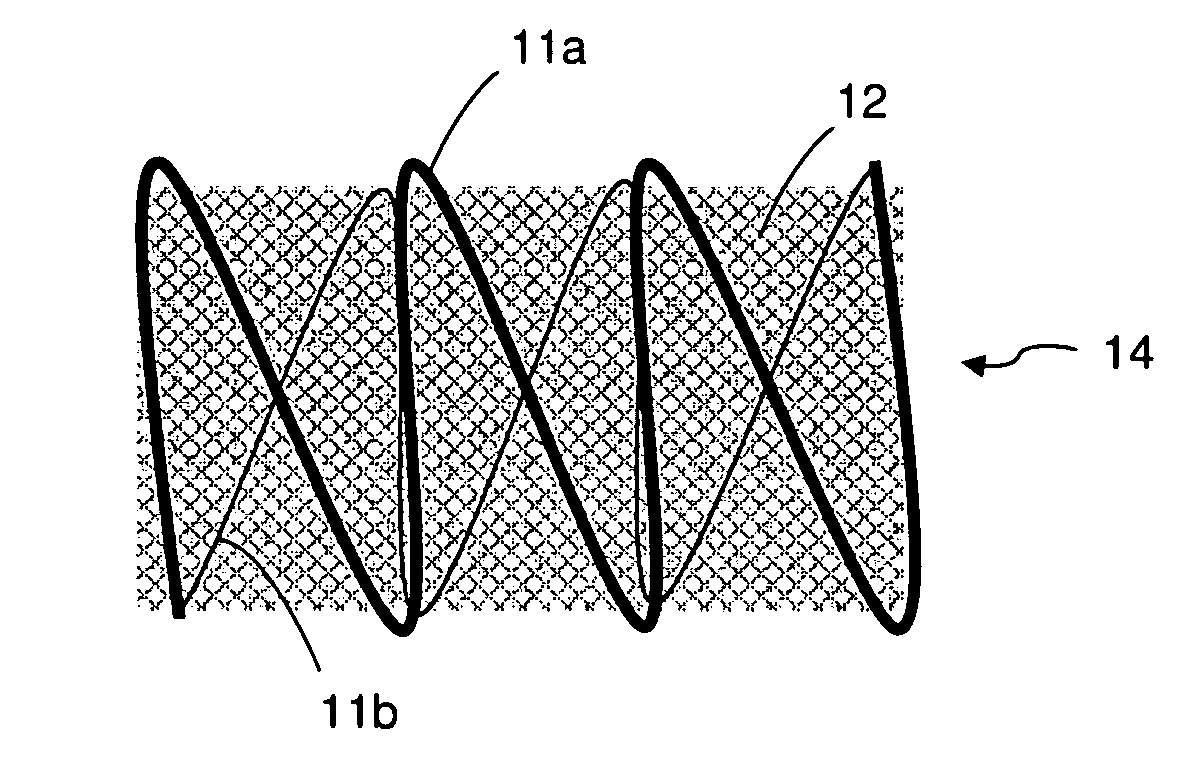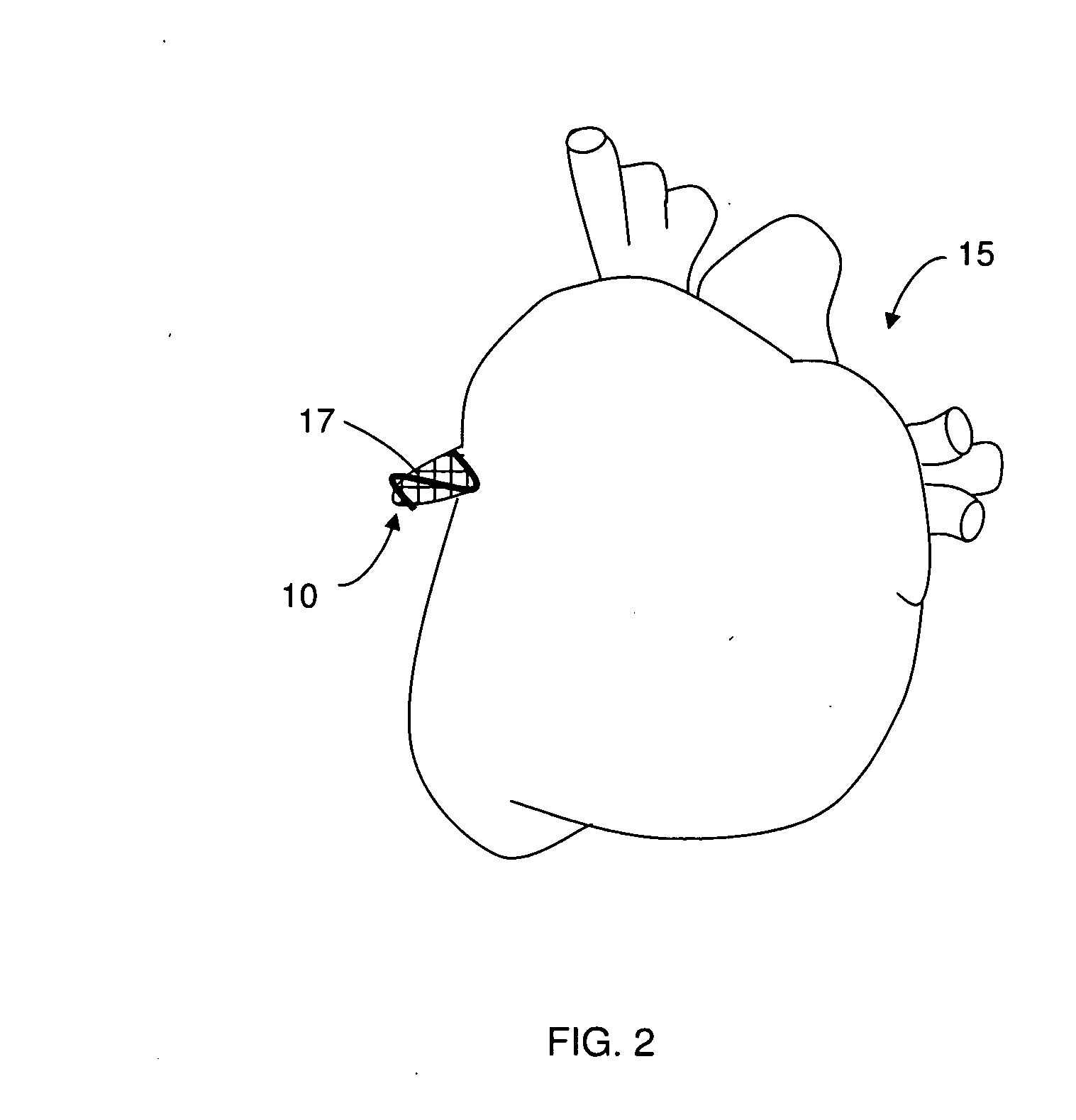Minimally-Invasive Method and Device for Permanently Compressing Tissues within the Body
a tissue and minimally invasive technology, applied in the field of surgery methods and devices, can solve the problems of limiting the ability of the heart to pump blood effectively, affecting the function of the heart, so as to prevent clot formation and circulating, and prevent strokes. , the effect of minimal invasiveness
- Summary
- Abstract
- Description
- Claims
- Application Information
AI Technical Summary
Benefits of technology
Problems solved by technology
Method used
Image
Examples
Embodiment Construction
[0020]The present invention is method for permanently compressing tissues within the body so that they no longer function or no longer cause dysfunction. The method employs a compression device 10 that envelopes substantially the entire tissue. The method may be applied to tissues in the body such the appendix, gallbladder and stomach, and will be described with particular reference to the left atrial appendage to prevent blots clots from forming inside it.
[0021]FIG. 1 shows an untreated heart 15 and left atrial appendage 17 (referred to hereafter as “LAA”). FIG. 2 shows a heart 15 after being treated with the method herein, namely with the preferred embodiment of the compression device 10 disposed around the LAA 17.
[0022]FIGS. 3-6 show several embodiments of the compression device 10. Each compression device 10 comprises a spring 11 and a flexible sheet 12. The spring 11 can take any form provided that in its relaxed state the opposing sides of the spring are biased towards each ot...
PUM
 Login to View More
Login to View More Abstract
Description
Claims
Application Information
 Login to View More
Login to View More - R&D
- Intellectual Property
- Life Sciences
- Materials
- Tech Scout
- Unparalleled Data Quality
- Higher Quality Content
- 60% Fewer Hallucinations
Browse by: Latest US Patents, China's latest patents, Technical Efficacy Thesaurus, Application Domain, Technology Topic, Popular Technical Reports.
© 2025 PatSnap. All rights reserved.Legal|Privacy policy|Modern Slavery Act Transparency Statement|Sitemap|About US| Contact US: help@patsnap.com



